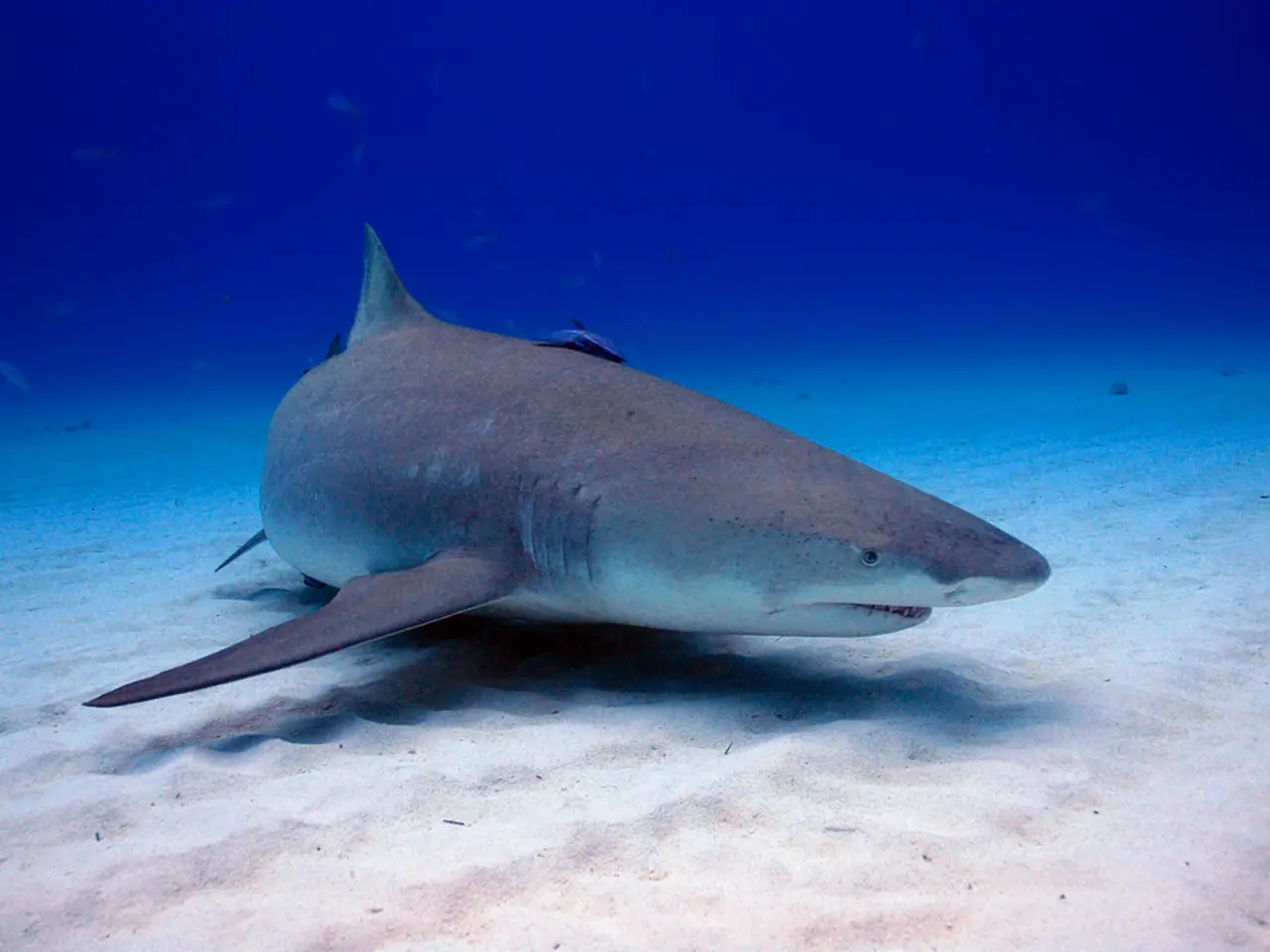Majestic Dolphin Encountered in Distress in Hyères Harbor: What Leads to These Aquatic Giants Facing Perilous Circumstances?
In a heartwarming incident on December 29, 2024, a bottlenose dolphin was successfully rescued from Port-Saint-Pierre harbor in Hyères, France. The grey marine mammal, known for its lighter flanks and belly, found itself in a tricky situation due to the confined space of basin 4, which poses challenges for its sonar navigation.
The rescue mission serves as a testament to successful human intervention in marine ecosystems. A passerby spotted the distressed dolphin and alerted authorities, leading to a swift response. The port officer, with gentle guidance, led the dolphin towards the harbor's exit, and the marine mammal seemed to understand the officer's intentions, following him until it reached open waters.
Dolphins sometimes stray into harbors due to various reasons, such as disorientation or searching for food. In ports and harbors, sonar signals from ships and underwater construction can interfere with their echolocation, causing confusion. Human activities and noise pollution also contribute to their disorientation, leading them into shallow or confined waters where they risk injury or stranding.
Preventing such straying involves monitoring noise pollution, regulating ship traffic, and using deterrents to guide dolphins away from dangerous port areas. Rescue efforts typically include safely guiding dolphins back to open waters using trained marine mammal responders and minimizing human disturbance during the process.
To prevent dolphins from straying into ports, strategies can include implementing quieter ship technologies, managing vessel speed and traffic in critical marine mammal habitats, using acoustic deterrent devices at port entrances, and educating harbor operators and the public on reducing disturbances to marine life.
Cetacean stranding events, like the one at Hyères, highlight the need for enhanced awareness about marine life navigation challenges near human habitats. These events underscore the need for continuous monitoring and quick response teams dedicated to assisting marine wildlife in distress. They also emphasize the importance of increased efforts toward protecting their natural environments.
Bottlenose dolphins, protected under conservation laws and classified as "Least Concern" on the International Union for Conservation of Nature (IUCN) Red List, can weigh up to 880 pounds and reach lengths of 13 feet. The incident at Hyères serves as a reminder of the fragility of marine ecosystems and the importance of human intervention when nature calls for help. After being rescued, the dolphin leapt joyfully before swimming off towards "les Mèdes," a testament to the dolphin's resilience and the success of the rescue mission.
The incident at Hyères exemplifies the significance of combining science and environmental-science in addressing climate-change-related challenges faced by marine life, such as noise pollution and ocean disruptions from human activities. Enhanced health-and-wellness practices for marine ecosystems, including strategies to prevent dolphin straying, could help support the survival of bottlenose dolphins and other species, contributing to a more balanced climate-change response.




